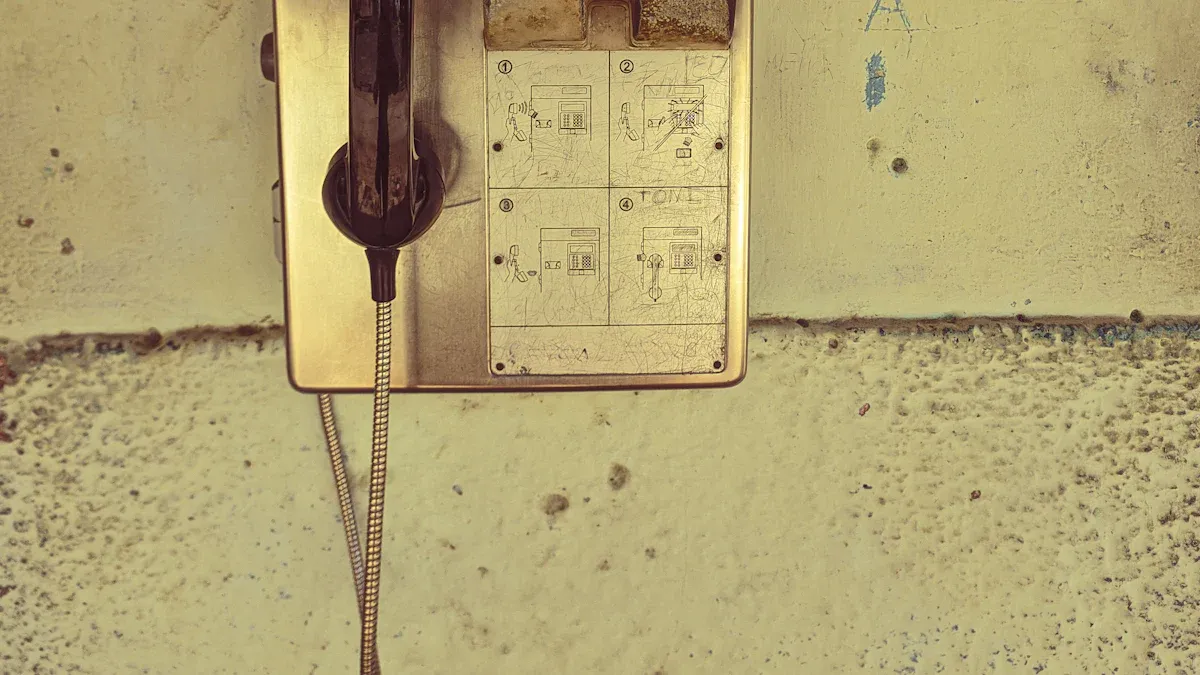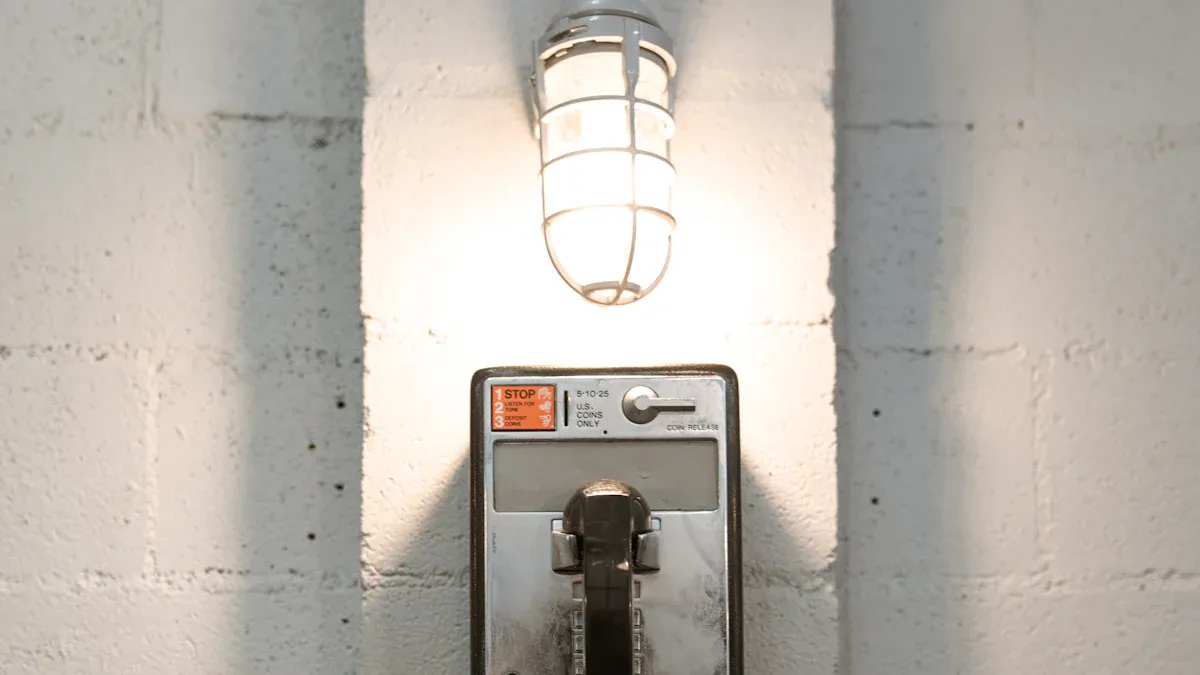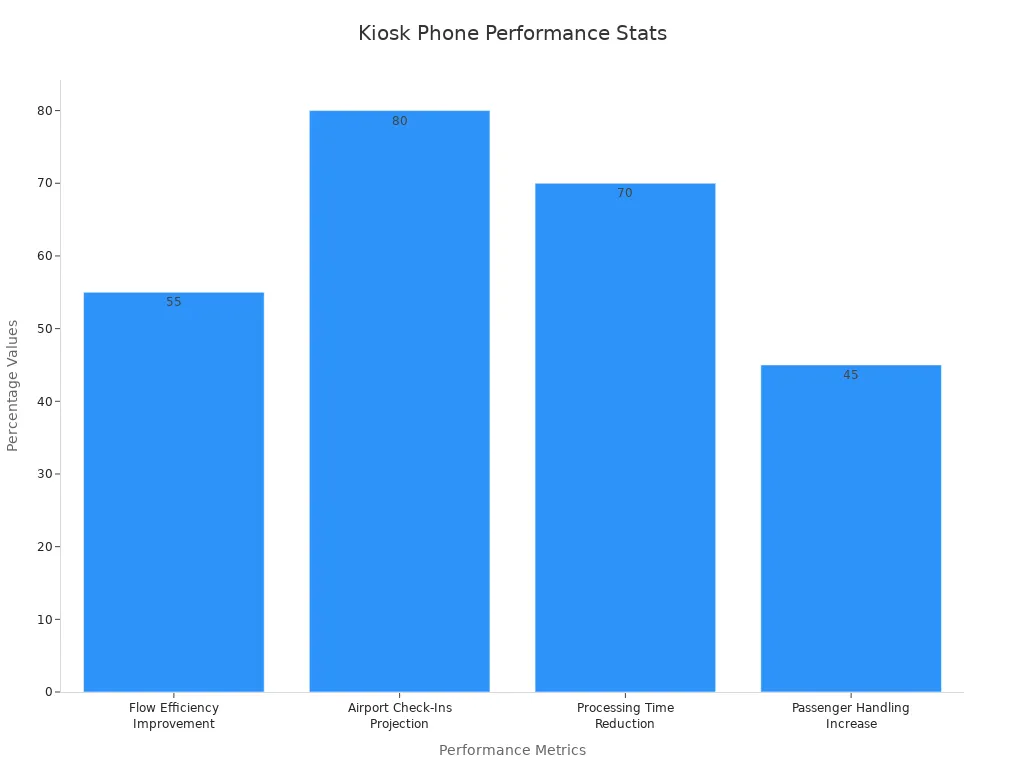
A kiosk industrial telephone handset transforms public engagement by ensuring everyone can access reliable communication. People in busy environments depend on these devices for immediate help or information. Effective tools like these create safer, more inclusive public spaces. Real-world success stories highlight their essential role.
Key Takeaways
- Kiosk industrial telephone handsets improve public access by supporting people of all abilities, including those with disabilities and low digital skills.
- These handsets offer reliable communication during emergencies thanks to their durable design and backup features, ensuring help is always available.
- Well-designed kiosks enhance user experience by reducing wait times, increasing satisfaction, and making public services easier and faster to use.
How Kiosk Industrial Telephone Handset Impacts Public Engagement
Accessibility and Inclusivity
A kiosk industrial telephone handset increases accessibility for a wide range of users. Designers who involve older adults, people with impairments, and those with low digital skills create more inclusive solutions. Universal design principles help adapt interfaces to different abilities. These principles simplify interactions and anticipate user errors.
- Adjustable kiosk elements support wheelchair users.
- Voice recognition and simplified menus assist visually impaired individuals.
- Clear colors, readable fonts, and pictograms help users with low technological ability.
- Instructional aids, such as short videos or task-oriented wizards, guide older adults and non-native speakers.
Well-designed kiosks reduce barriers and foster social inclusion. They provide an alternative for people who cannot use smartphones, ensuring everyone can access essential services.
Reliability in Critical Situations
Public spaces demand reliable communication tools, especially during emergencies. A kiosk industrial telephone handset offers robust performance in harsh environments. Its durable construction withstands vandalism, weather, and heavy use. Emergency responders and the public rely on these devices for immediate assistance. Consistent operation ensures that help remains available when needed most.
Many installations feature backup power and tamper-resistant components. These features guarantee functionality during power outages or security incidents. The handset’s reliability builds trust in public infrastructure and supports community safety.
User Experience and Interaction
User experience shapes public perception of kiosk industrial telephone handsets. Researchers have observed users interacting with these devices in real-world settings. They collected both task success metrics and qualitative feedback. This approach revealed common difficulties and user behaviors.
- Observational research highlights the importance of ergonomic placement and clear signage.
- Privacy features and queue management improve comfort and reduce errors.
- Environmental factors, such as lighting and cleanliness, enhance user satisfaction.
- Social context matters: peer pressure can cause users to rush, while companionship reduces stress.
Quantitative data shows that kiosks can reduce wait times by up to 40%. Businesses report increased customer spending—up to 30% more—when users order through kiosks. System Usability Scale (SUS) scores between 56 and 62 indicate steady improvements in usability. Demographic trends reveal that 66% of users prefer self-service kiosks for speed and ease. These findings demonstrate that a kiosk industrial telephone handset can deliver a positive, efficient, and satisfying user experience.
Real-World Benefits and Challenges

Public Transportation Hubs
Public transportation hubs rely on kiosk industrial telephone handsets to streamline passenger movement and improve service delivery. These devices enable travelers to access real-time information, purchase tickets, and request assistance without waiting in long lines. The following table highlights key performance metrics:
| Performance Metric | Statistic | Source |
|---|---|---|
| Improvement in passenger flow efficiency | 55% improvement | Federal Transit Administration |
| Projected airport check-ins via kiosks | 80% by 2030 | Transportation Security Administration |
| Reduction in processing times | 70% reduction | Federal Aviation Administration |
| Increase in passenger handling annually | 45% increase | Federal Aviation Administration |

Transportation, travel, and hospitality sectors lead the adoption of these systems, capturing over 35% of the kiosk market share in 2024.
Emergency and Safety Installations
Emergency and safety installations depend on robust communication tools. Kiosk industrial telephone handsets provide immediate access to help during crises. Their durable design ensures operation in harsh environments, supporting both public safety and rapid emergency response. These handsets often feature backup power and tamper-resistant components, which maintain functionality during outages or security incidents.
Community Centers and Public Spaces
Community centers and public spaces benefit from these handsets by offering accessible communication for all visitors. They support check-ins, information requests, and service access, especially for individuals who lack smartphones or digital literacy. Multi-language support and user-friendly interfaces increase inclusivity, making essential services available to diverse populations.
Key Advantages
- Streamlined check-ins and reduced wait times.
- Improved data accuracy and lower paperwork.
- Lower labor costs through automation.
- Enhanced privacy and security for users.
- Increased accessibility for elderly, disabled, and low-income groups.
- Integration with existing systems for real-time updates.
Potential Limitations
- Public kiosks cannot easily personalize accessibility features for every user.
- Studies often lack diversity, limiting understanding of all user needs.
- Research methods sometimes rely on indirect observation, reducing accuracy.
- Users with disabilities may struggle to locate or interact with kiosks.
- Stakeholders may underestimate the importance of accessibility due to cost concerns.
- Elderly users sometimes prefer human interaction, limiting engagement.
- While kiosks offer 24-hour service, people with disabilities still face barriers.
- Ongoing research seeks to improve accessibility, but significant challenges remain.
A kiosk industrial telephone handset elevates public engagement by increasing accessibility and reliability.
- Community-based kiosks average 19.4 uses daily, showing strong public interest.
- Over 50% of patients in Emergency Departments welcome kiosk health information.
Organizations should prioritize trust-building and clear communication to maximize benefits and overcome barriers.
FAQ
What makes a kiosk industrial telephone handset different from a regular phone?
A kiosk industrial telephone handset uses rugged materials. It resists vandalism and harsh weather. It also supports accessibility features for public use.
How do organizations maintain these handsets in busy public areas?
Maintenance teams inspect handsets regularly. They clean surfaces, check connections, and test functionality. Quick repairs ensure continuous service and user safety.
Can users with disabilities operate these handsets easily?
Most models include tactile buttons, audio prompts, and visual aids. These features help users with different abilities communicate effectively and independently.

